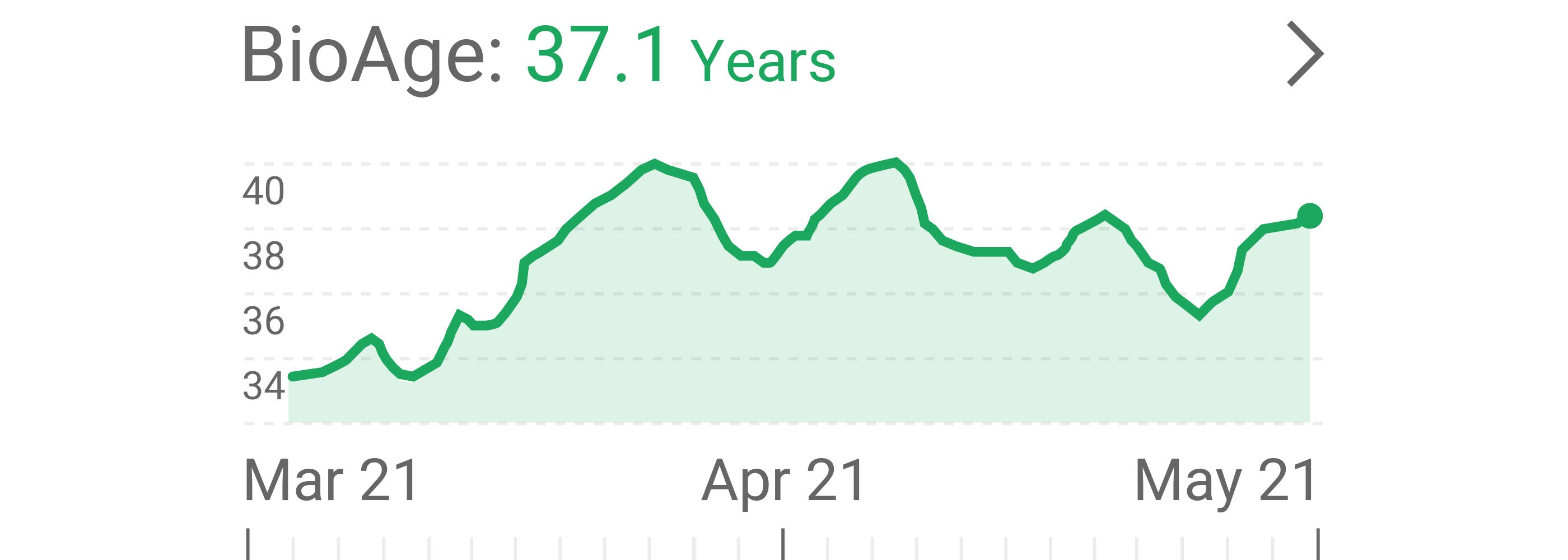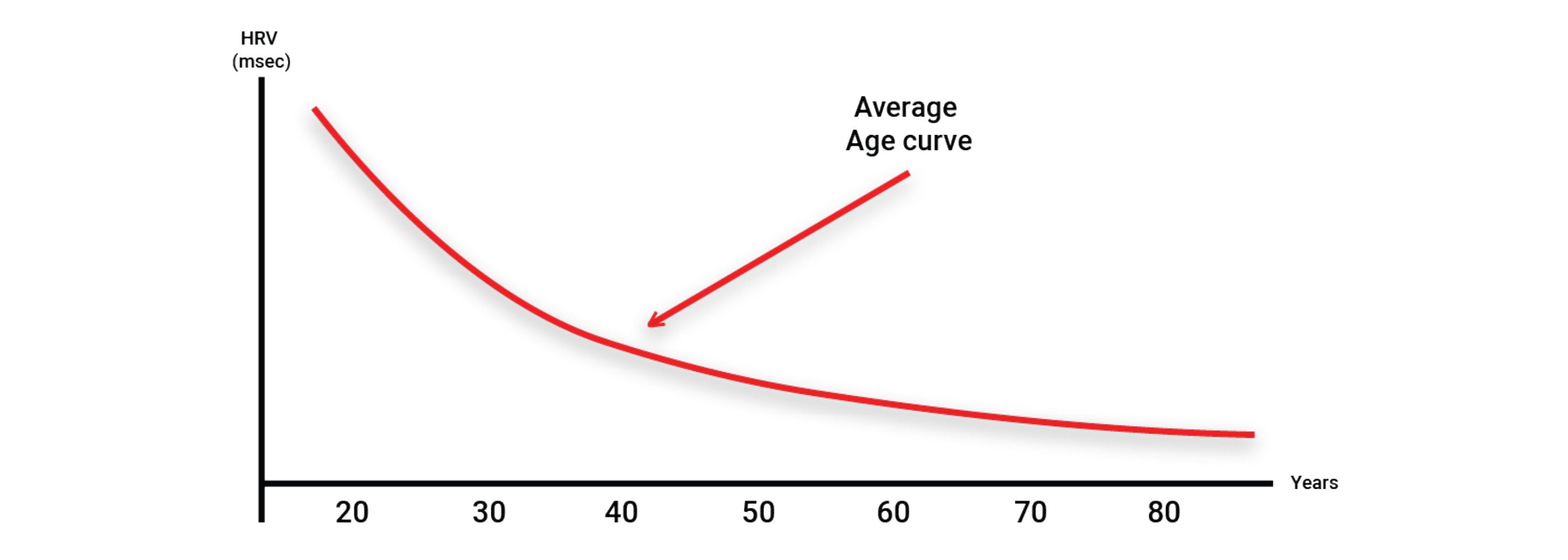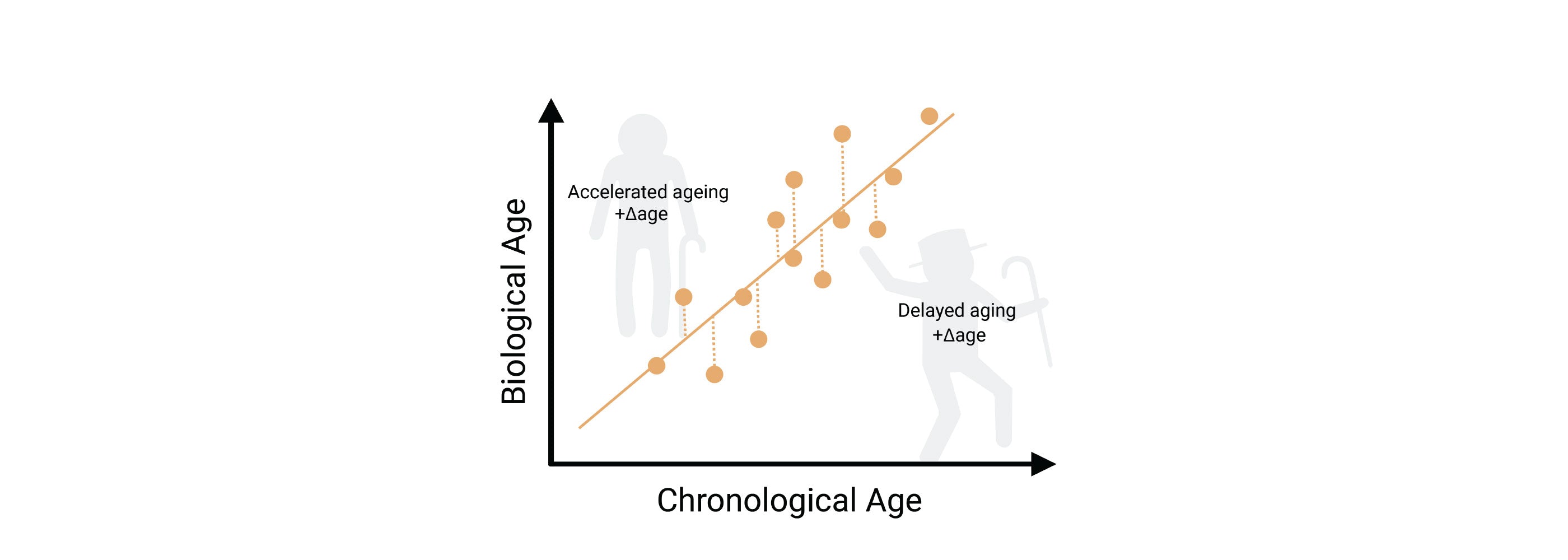BioAge
The Bugatti smartwatch has a special feature that uses a smart algorithm to figure out how old your body is. This algorithm uses information about your heart rate variability (HRV) from the past and present. When you tap on the BioAge section in your Bugatti Smartwatches app, the display turns sideways to show you the most recent data. The horizontal axis of the graph can be adjusted, allowing you to see changes in your bio-age over the course of a year. The chart shows an average based on the lowest and highest ages recorded. It's important to note that you can't scroll on this screen of the watch.
What is BioAge?
The purpose of measuring your BioAge is to determine how quickly your body is aging. By doing so, you can assess how your current diet and lifestyle choices are impacting your overall aging process and health. Your BioAge provides valuable information about the accumulated damage and aging that has occurred within your body throughout your life. Additionally, your bio-age can serve as a useful predictor for estimating your health span (the number of healthy years you can expect to live) and your overall lifespan.
How is BioAge calculated?
The Bugatti Smartwatch calculates BioAge based on the "neurovegetative control" of the body, which is reflected in the control of heart rate variability (HRV). The quality of these control processes naturally changes as we age. In developing the bio-age feature, we initially relied on scientific research data and further refined it with approximately 3 million individual measurements up to the present day. This process revealed an age-related correlation, where HRV tends to be higher on average in younger years and gradually decreases or "loses function" as we get older.
As we age, the decrease in heart rate variability (HRV) is mainly attributed to a decline in the function of the parasympathetic nervous system. This system is responsible for regulating the range of variation in HRV. Think of it like a power cable that sends signals to the target organs to provide relief. The parasympathetic nervous system is protected by a protein layer that acts as insulation, shielding it from external factors. However, as we age, this insulation deteriorates, resulting in decreased shielding and "conduction losses." This leads to a reduction in the regenerative influence it can provide. Consequently, the range of heartbeat fluctuation decreases, and HRV decreases as a result of aging.
BioAge in our life
Our lifestyle choices have a significant impact on the neurovegetative control, both positively and negatively. Factors such as chronic stress, overly intense physical training, lack of sleep, significant nutritional deficiencies, and acute or chronic illnesses can systematically impair the function of the parasympathetic nervous system, which is responsible for relaxation and recovery. As a result, the overall neurovegetative state can resemble that of an older person. In individuals with a high bio-age, the sympathetic nervous system, responsible for the "fight-or-flight" response, tends to dominate, while the parasympathetic nervous system fails to provide adequate compensation for relaxation and recovery.
In the calculation of BioAge, short-term fluctuations in HRV that occur between individual measurements are not considered significant. The focus is on capturing long-term, systematic changes rather than momentary fluctuations. The bio-age calculation is designed to reflect stable underlying trends rather than being influenced by temporary factors like a single night of poor sleep. It aims to provide an indication of overall systematic changes (positive or negative) rather than being influenced by isolated, momentary values.
The BioAge calculation is specifically derived from measurements taken during the night, as this is considered to be the most stable and comparable state for longitudinal analysis during sleep. By observing an increase in BioAge, we can infer that stressors are predominantly impacting the body, and the compensatory effects of relaxation and recovery are insufficient in the medium term. However, it's important to note that changes in living conditions and a reassessment of the accumulated stress surplus can lead to a decrease in BioAge as well. This highlights the potential for improvement and reversing the negative effects by addressing and modifying the underlying stress factors.
How to reduce your BioAge?
It is crucial to ensure that your BioAge is not higher than it should be in order to maintain a sense of well-being and lead a healthy life. It's important to remember that aging is not solely determined by a single factor but is the cumulative result of various processes occurring simultaneously. However, you have the power to influence and reduce your BioAge through simple actions. By taking steps to limit exposure to toxins, minimize stress, adopt a healthy diet, prioritize sufficient sleep, and engage in regular exercise, you can actively work towards reducing your BioAge and promoting overall health.







